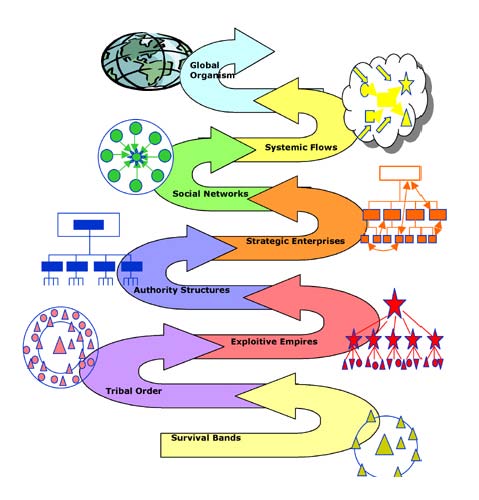Can you invent Tier 2 organizations without being embedded in an ecology/economy of Tier 1 organizations?
As I consider how Reinventing Organizations casts light on Reinventing the City, I am speculating that so-called Tier 2 organizations cannot exist without the competencies of the workers and capacities of the Tier 1 organizations in which they are currently and necessarily embedded.
All the organizations that Laloux explores have gained their capacities from the contributions of individuals who have learned basic skills and grown their capacities to organize, team, partner and collaborate in the Tier 1 system.
If we fail to recognize the essential “background” support of this ecological space (of the city) we will be blind to the functions offered by the city as a living system. The city is like a mega-dojo where players can learn their way through a series of organizational practices that earns them the privilege and freedom to articulate those competencies like a black-belt master (and thereby Reinvent Organizations). In most cities, a whole spectrum of Tier 1 organizations offer a series of dojos where players can learn the rudiments of reinventing themselves, their teams and organizational forms. If for no other reason than to gain the advantages of building on our skill sets we must thank the spectrum (and holarchy) of Tier 1 organizations that co-exist in our cities who accomplish these competency outcomes as a by-product of their existence. (Thank you to families, sports teams, military and para-military organizations, professional associations, social networks, systems innovators, environmental invigorators, global connectors).
All living systems must be able to survive, connect with their environment and reproduce. (These are axiomatic to a circular economy). If we consider organizations to be living systems, then we must recognize the necessary and inextricable connections each organization has with all the other organizations and people that exist where they do business – especially because they provide the very context of (mostly) Tier 1 (and a few Tier 2) capabilities.
We cannot reinvent the city, if we do not respect the fundamentals of the circular economy and the dojos where the members of our human hive learn how to manage self, others, organizations and the city system as a whole.
This blog continues an exploration of what we can learn if we applied some of Laloux’s ideas from Reinventing Organizations to recalibrating the complexity of the city.

Reblogged this on Eco-Social Research and Dialogue.
[…] City as Dojo for Reinventing Organizations […]
[…] Or correspondence with organizational structures described by Sociocracy or Holacracy, or the structural aspect of Spiral dynamics. One common denominator is the notion of “evolutionary purpose” and “bringing the whole […]